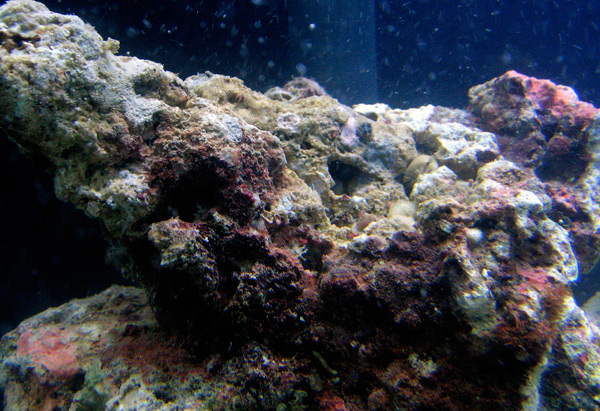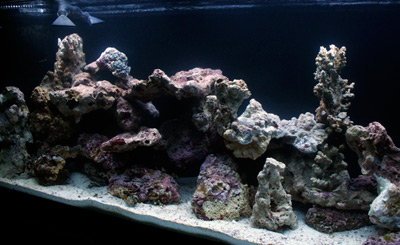“Caribbean Chris” and I are very frequently asked whether it’s okay to add new pieces of live rock directly to an established system. Ever erring on the side of caution, we generally discourage this practice. Instead, we recommend curing them in a separate saltwater-filled tank, vat, tub, bin, or other suitable vessel with heating and circulation provided for several weeks before adding them to an established system. The rocks can be considered ready for the display tank only after there is no measurable ammonia or nitrite and the nitrate level has stopped rising.
Here’s why we recommend this:
Deadly die-off
The handling involved in transporting live rock from the ocean floor to your aquarium half a world away causes many of the organisms on it to perish. As these organisms die and decompose, they may produce enough toxic ammonia to overwhelm your system’s biofilter. It’s much better to manage this die off in a separate container where it won’t put any livestock at risk.
What about cured rock?
Even if you purchase cured live rock—meaning most of the die-off of encrusting organisms has been allowed to occur under controlled conditions at the live rock operator’s facility—it’s still best to avoid placing it directly in your established system. The reason being, some additional die-off of organisms is inevitable whether you buy cured or uncured live rock. Even factors as seemingly minor as a change in the rocks’ orientation to light or water flow can lead to additional die-off.
Now, there’s no question that this occurs to a much lesser degree with cured rock than with uncured rock, but even a small amount of die-off can potentially yield more ammonia than your biofilter can manage.

What about larger tanks?
Obviously, the larger the system, the lower the potential impact of adding live rock without further curing—much the same way leaving a dead, decomposing fish in a large system is much less of an issue than leaving the same fish to rot in a desktop nano. But why take the risk when your precious livestock is on the line?
Besides, ammonia isn’t the only issue you might have to deal with if you put newly acquired live rock directly into an established system. You also have to worry about…
Pesky hitchhikers
In addition to being a source of beneficial micro- and macrofauna, live rock can bring with it a variety of potentially irksome organisms, such as majano and Aiptasia anemones, mantis shrimps, crabs, flatworms, hair and bubble algae, etc. Observing the rocks in a separate container for several weeks will greatly enhance your odds of detecting and removing these pests before they hitchhike into your display tank.



